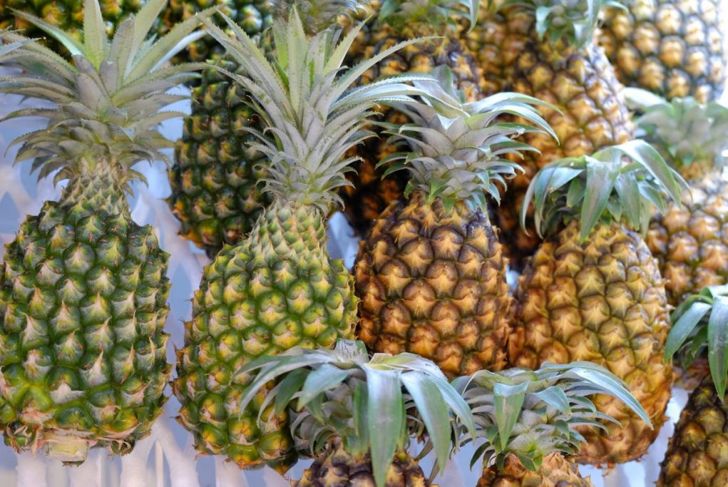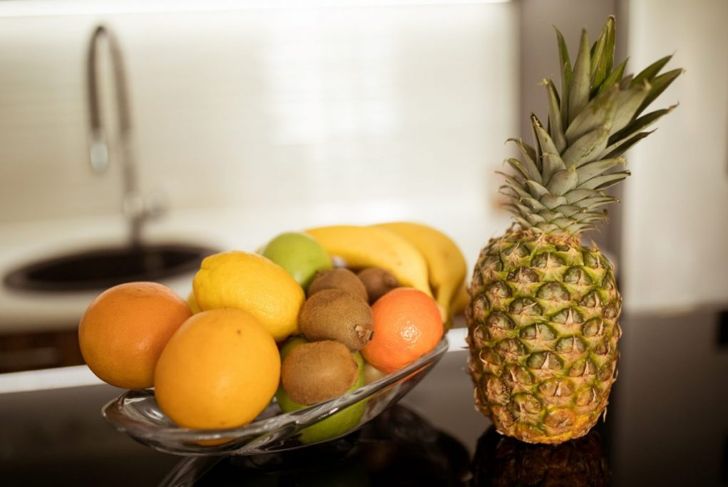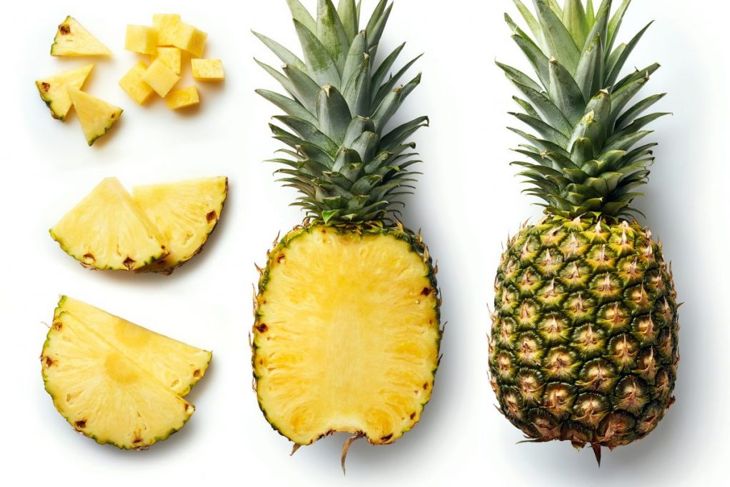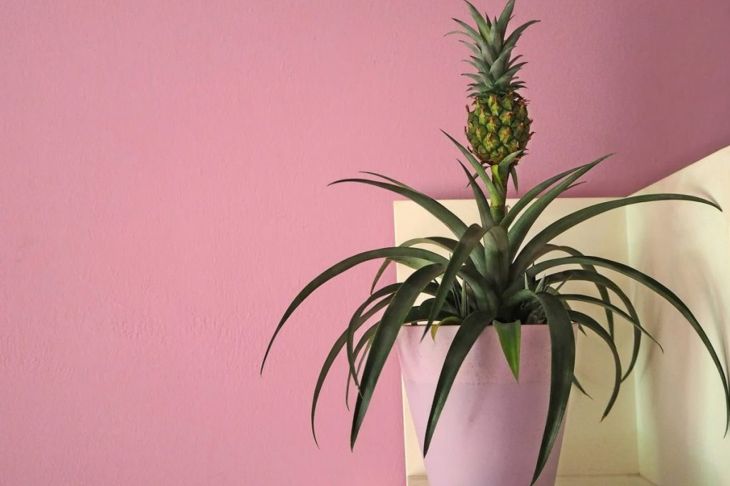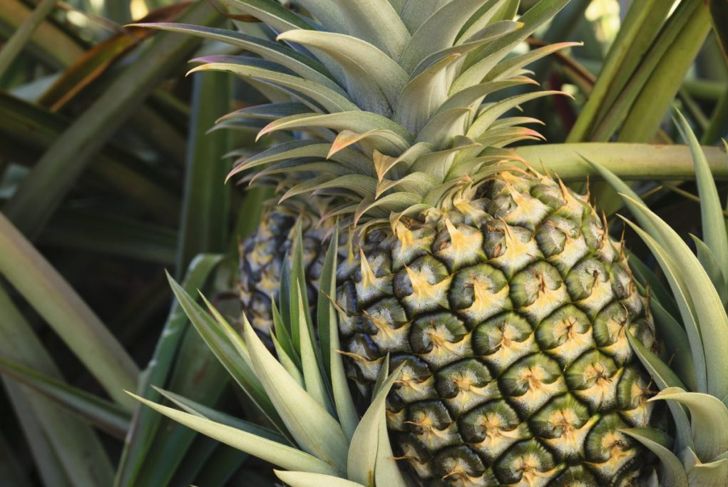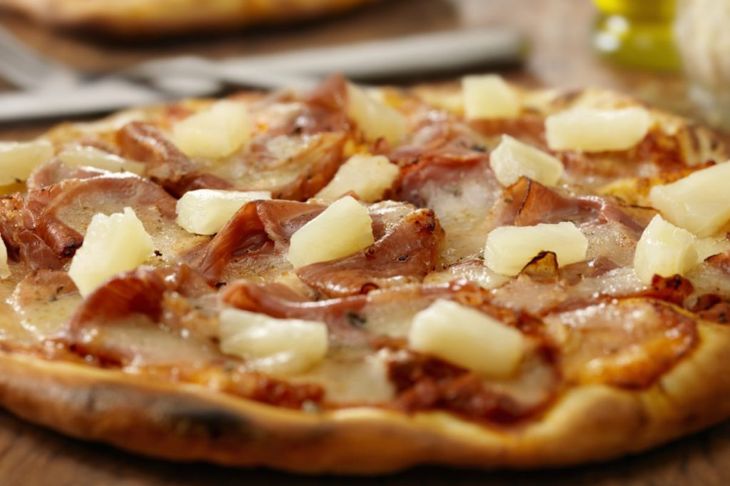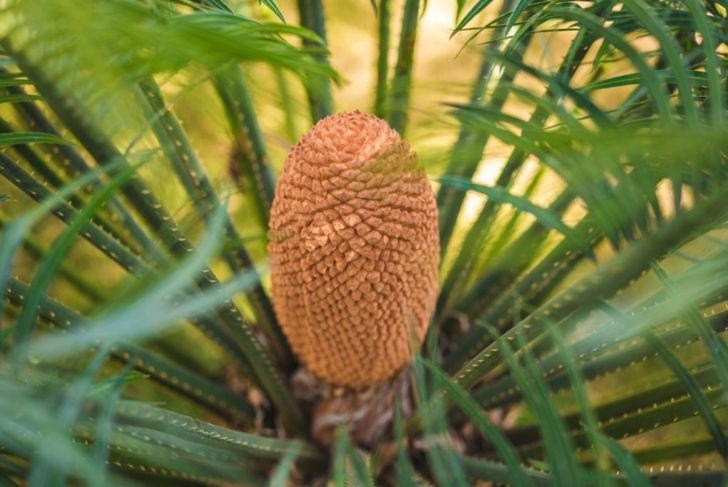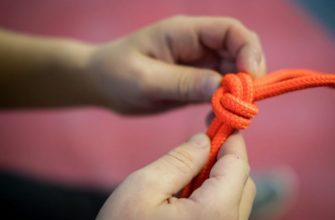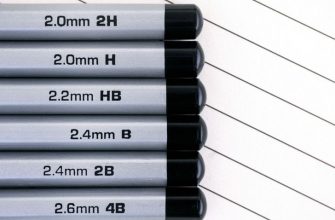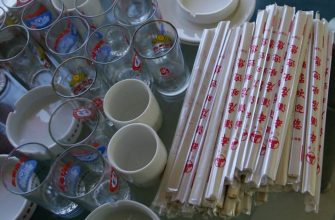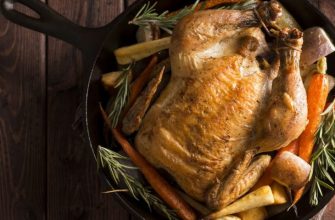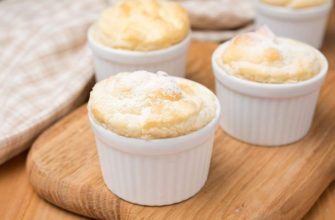Pineapple is often referred to as the prima donna of fruit and why not? Crowned with a glossy leaf cluster, sweet and succulent flesh lies beneath a somewhat prickly exterior. This seedless fruit is a syncarp, which simply means the fruit is created from an integration of several flowers. Because of its thick skin, it may be tricky to pick a pineapple at its prime, but there are a few telltale tips for choosing a delicious and juicy pineapple.
Select the Best One
A ripe pineapple has healthy green leaves, a firm shell and gives a little when gently squeezed. Pineapple have a distinctive scent, so a sniff test near the base is permitted. Pineapple ripens only slightly once picked. If you choose one that is slightly underripe, you can help the fruit reach ideal ripeness. Cut the top off and then place the pineapple body upside down on a plate. Cover and let the fruit rest in the refrigerator for two or three days. This process is believed to help the juices at the bottom circulate throughout the rest of the pineapple.
Storage Tips
On a counter, pineapple is good for one-to-three days, and three-to-five days when refrigerated in a perforated bag. Sliced pineapple that’s refrigerated in an airtight container is good if eaten within six days. The ideal refrigerator temperature for storing the fruit is 36 degrees Fahrenheit. You may store it in slightly warmer temps – from 45 to 55 degrees Fahrenheit – if you prefer. Frozen pineapple is good for up to 12 months.
Easy Preparation
To make a stable base from which to work, use a sharp chef’s knife to remove the top and bottom. Place the flat surface down and cut away the peel in deep strips that include the eyes. Slice the pineapple lengthwise, then cut each of those into halves. Cut the core out of the center and cut the quarters into chunks. If the thick skin exhibits some mold growth, the fruit inside is still edible. To avoid cross-contamination when cutting the pineapple, avoid guiding your knife through the moldy parts.
Frozen Pineapple
To freeze canned or fresh pineapple first line a cookie sheet with parchment or waxed paper. Arrange the slices or chunks so no edges touch. Place the cookie sheet in the freezer for approximately 24 hours. Remove the pineapple and transfer to freezer bags. Squeeze as much air as possible out of the bags before sealing to prevent freezer burn. Thaw the pieces in the refrigerator overnight, then use in your favorite recipe or smoothie.
Grow one at Home
Pineapple grows in the ground in tropical areas, but they flourish when grown as indoor potted plants. These plants may be hesitant to produce the flowers needed to set the fruit, but you can help it along. Place the plant and a ripe apple in a plastic bag for about three days. The apple gives off gases that encourage the pineapple to bloom. Give the plant a small amount of water two-to-three times a week, and don’t let the soil become completely dry. Once a month, you can fertilize using one that is formulated for house plants.
How to Harvest
Pineapple is simple to grow, but when to harvest it is a bit tricky. A pineapple is ready to harvest when the fruitlets on the skin flatten and, starting at the bottom and moving up, the peel changes from green to yellow. In addition to color, size is a good indicator of harvest readiness. The weight of a ripe pineapple is between five and 10 pounds. Wear gloves to avoid scrapes and cuts from the sharp scales. Cut through the stem using sturdy shears or a hefty knife, leaving about one-inch of leaves attached to the fruit.
Health Benefits
Pineapple is a good source of vitamin C, manganese, copper and folate. This fruit contains an enzyme called bromelain, a plant compound that is associated with many health benefits. Bromelain provides dietary fiber that helps break down protein, helps with regular elimination and enhances eye health by lowering the risk of macular degeneration. Bromelain also aids in preventing cancer by reducing tumor growth, it reduces pain-causing inflammation, and it aids in preventing blood clots.
Unusual Uses
While consumers discard a pineapple’s core, skin, and ends, the canning industry uses those unwanted parts to make animal feed, alcohol, and vinegar. The garment industry uses piña, the Spanish word for pineapple, to make easy-care, lightweight fabric, usually white or ivory in color. Pineapple fiber is also used in wallpaper. If you mix pineapple juice with sand, you can clean stubborn stains from surfaces.
Cooking Tips
The bromelain enzyme breaks down proteins in meat, making it a great tenderizer. You can include pineapple in smoothies or use it in a mixed-fruit salad. Pineapple grills beautifully, and it’s an ideal choice with ham or chicken and vegetable kebobs. You can go Italian in Hawaiian-style when you make a pineapple and ham pizza. If you love to bake, you can’t go wrong with the classic upside-down cake or pineapple-coconut sorbet.
Fun Facts
In 1938, the word pineapple was used because it resembled a pine cone. SpongeBob SquarePants lived in a pineapple house with his pets. Pineapples regenerate so you can grow a new plant from leaves. Pineapples take from 18 to 20 months to reach maturation and only produce one fruit per plant. Hawaii produces one-third of the world’s pineapples.

 Home
Home Health
Health Diet & Nutrition
Diet & Nutrition Living Well
Living Well More
More